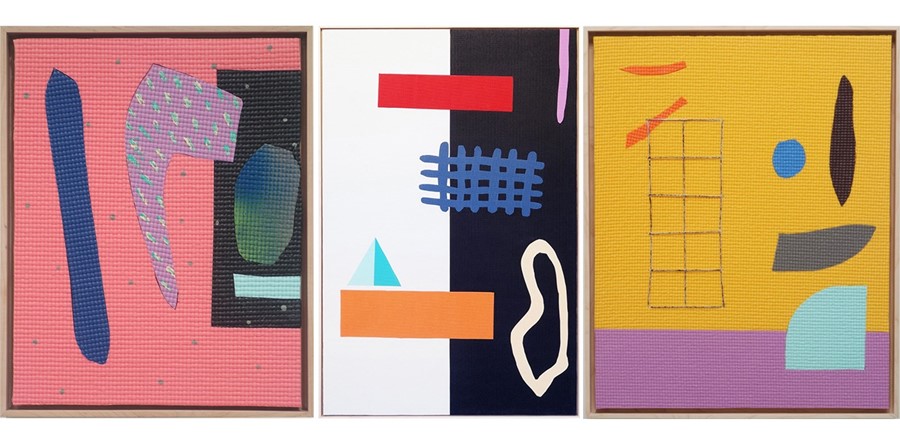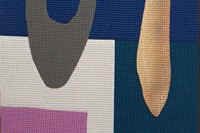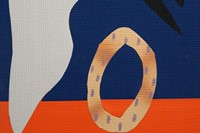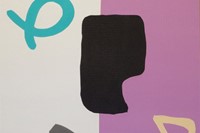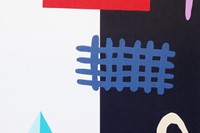Baltimore-based Alex Ebstein is bringing a new dimension to sports equipment with a new exhibition of her yoga mat-made artwork
From a distance, the work of Baltimore-based artist Alex Ebstein evokes that same sense of mystery and joy as looking at one of Matisse’s exuberant cut-outs. She smoothly, yet also crudely and with childlike charm, slices and re-arranges colourful, vaguely organic shapes into evocative new compositions. A closer look at Ebstein’s fragmented collages and they begin to feel a lot more intimate and familiar than the serendipitous curves of iconic modernist Matisse, however, not least because Alex’s unconventional artistic material of choice is yoga mats. The unmistakable, grid-like texture of the sports mats immediately inspires a sensory response and gives Ebstein’s work a uniquely 21st century setting and context. Her titles also prove intriguing: Haunted Memories, Dawn Gathering and Texting in Different Time Zones are dream-like and hint at elusive narratives.
Anyone who has spent any time doing yoga – with palms pressed firmly into a mat while arching into downward facing dog – will know the speckled texture well. The combination of definitive abstraction and familiarity is both comforting and thought-provoking, and invites you to draw intriguing parallels. As a yoga mat is designed to the scale of a person and is used to stretch and loosen the body, the artwork is intimately connected to physical contours: by rearranging the fragments, Ebstein’s artworks address ideas of body obsession, specifically the idea of sculpting, malleability, toning and “getting in shape”. They reference modern art’s premise of abstraction’s power of transcendence, and contemporary culture’s fixation with achieving physical and spiritual welfare.
If you’re in Rome this month, you can see Ebstein’s work on display at Frutta Gallery. Here the artist talks intimately about her creative process.
On yoga…
“Yoga as a popular recreation and exercise routine has unfortunately sort of become a caricature of an entitled class appropriating another culture in an elitist way. I think the marketing and product design that becomes part of this, and its contribution to a culture of waste (upgrading your mat, getting the newest gear and designs) is probably its most frightening aspect to me, but yoga as a practice and a community can be so positive. It is still a part of my life, but privately rather than in classes, and is very much tied into my studio practice and alone time.”
On her choice of artistic material…
“I began using yoga mats after a car accident while I was in graduate school. I hurt my arm and was unable to build or use tools, so I was looking to make work in a new way. When I first began working with the mats, they were only white and I was removing pieces from them so they became minimal, lacy planes hanging from the wall on dowels. I enjoyed the materiality of the mats, and working within the limited palette that they come in; it has helped to push me beyond my regular sense of colour and intuitive combinations.”
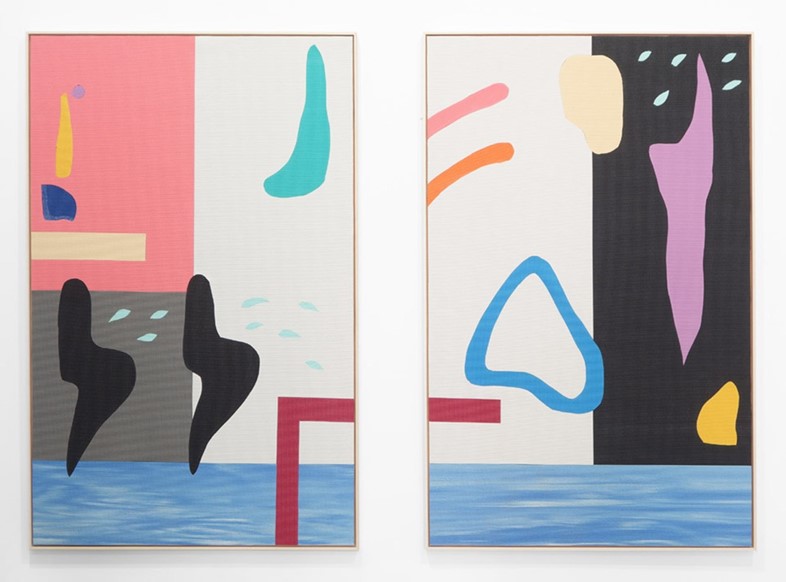
On sport and art…
“There is an overlap between art and sport: a personal process that becomes part of your public identity and sense of self.”
On abstraction…
“Abstraction allows me to highlight a single gesture or feeling and allow it to be the central element of a composition. A slump or a bend, a sigh, etc., these are all things I’ve simplified into a series of gestures and shapes.”
On making her artwork look deliberately handmade…
“I think the presence of the hand or the human in such a synthetic field of material re-establishes the inevitable imperfection of the body and its quirks. There is a coldness when the pieces are too perfect that makes them harder to relate to.”
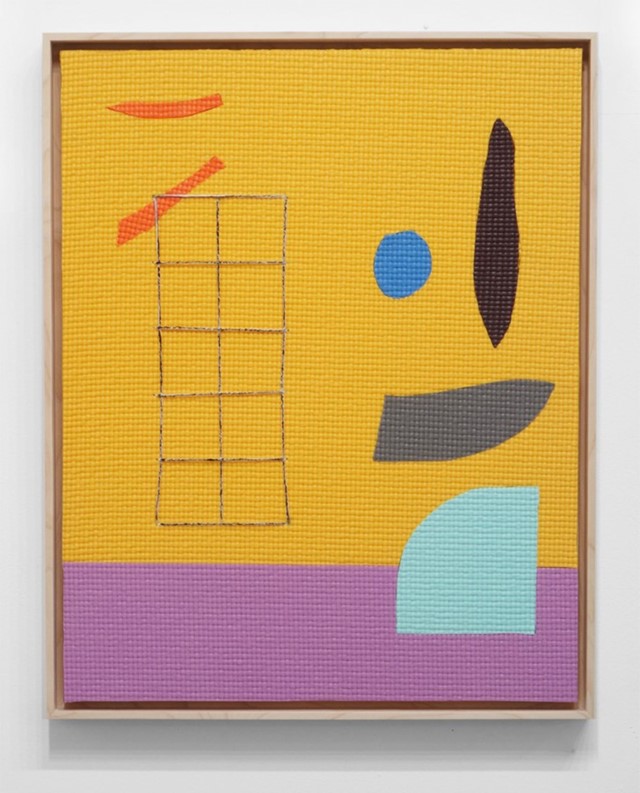
Stefano Calligaro and Alex Ebstein's work is on display at Rome's Frutta Gallery from March 10 until April 16, 2016.
